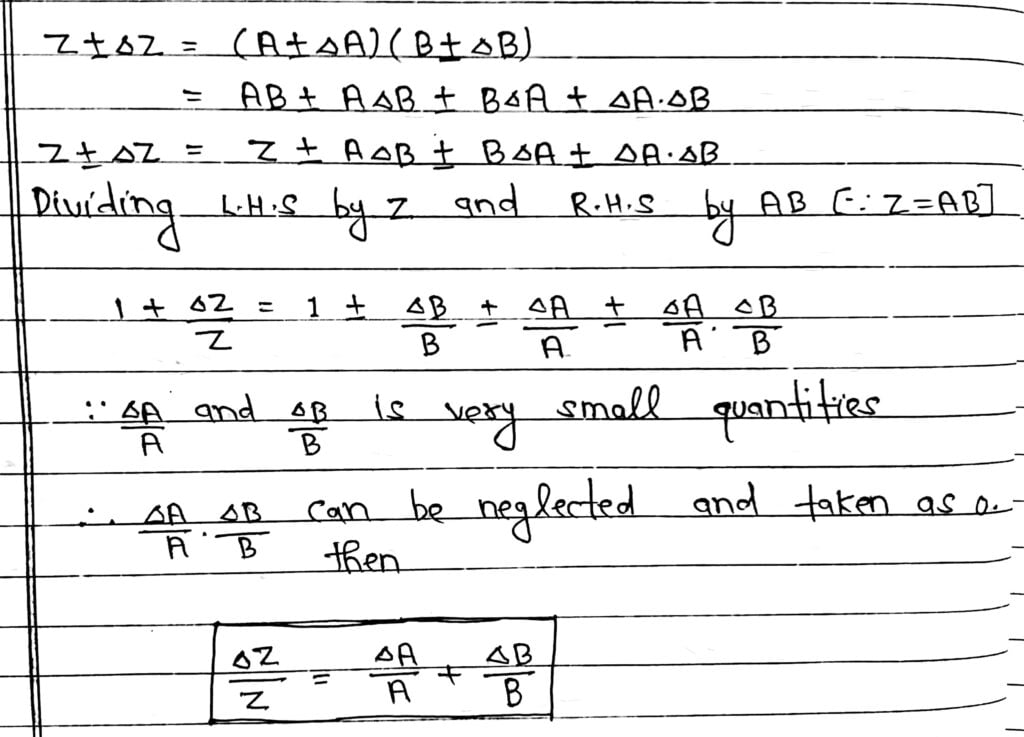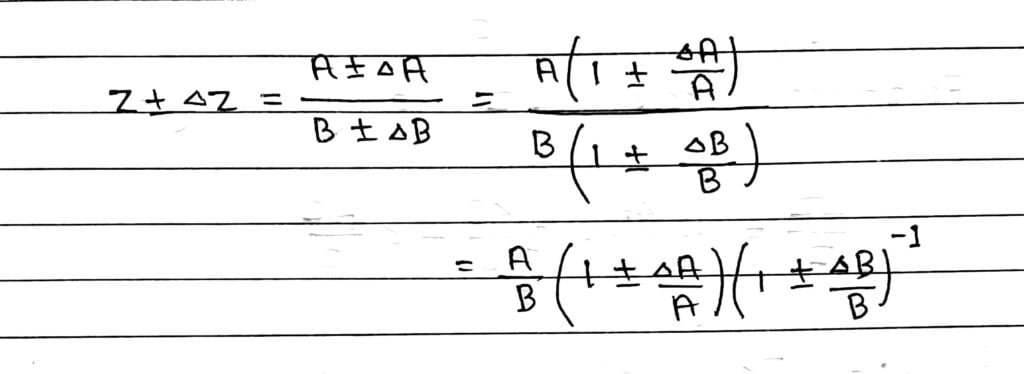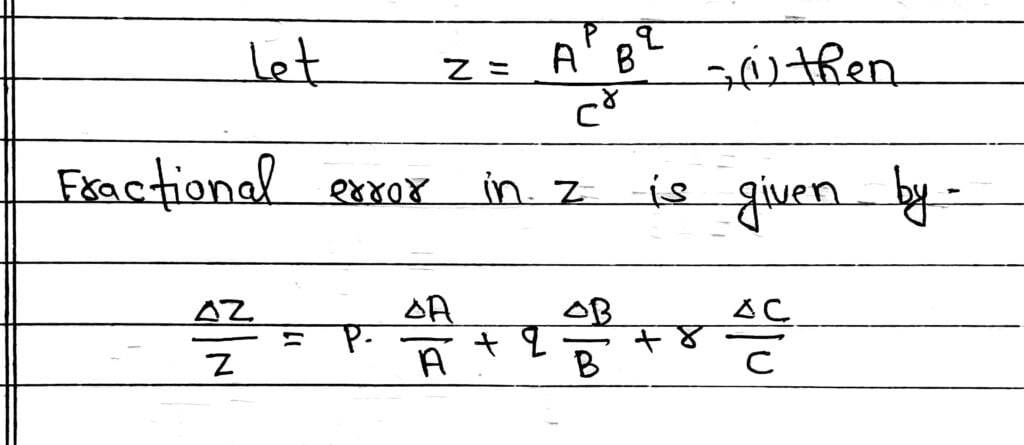When we perform the mathematical operations, such as addition, subtraction, division, multiplication etc, the error combination depends on the type of mathematical operation performed on physical quantities.
1. Error In Sum Of Two Quantities
Let ∆A and ∆B be the absolute errors in the two quantities A and B respectively, then

Hence, The maximum possible error in the sum of two quantities is equal to the sum of the absolute errors in the individual quantities.
2. Error In The Difference Of The Two Quantities
We consider the difference Z = A-B, then

Hence, the maximum error in the difference of the two quantities is equal to the sum of the absolute error in the individual quantities.
3. Error Of A Product
Let we consider the product Z = AB, then the error ∆Z in Z is given by

Hence, the maximum fractional error in the product of two quantities is equal to the sum of the fractional error in the individual quantities.
4. Error In The Division Or Quotient
Let we consider the quotient Z= A/B, then the error ∆Z in Z is given by


Hence, the maximum fractional error in the quotient of two quantities is equal to the sum of their individual fractional error.
5. Error In The Power Of A Quantities


Also Read
NCERT Class 11 Physics Book PDF Free Download
SL Arora Class 11 Physics Book PDF Free Download
All In One Arihant Class 11 Physics Book PDF Free Download
Must Read
NCERT Class 11 Physics Notes Chapter-1(Physical World) PDF Free Download
NCERT Class 11 Physics Notes Chapter-2(Units and Measurement) PDF Free Download
